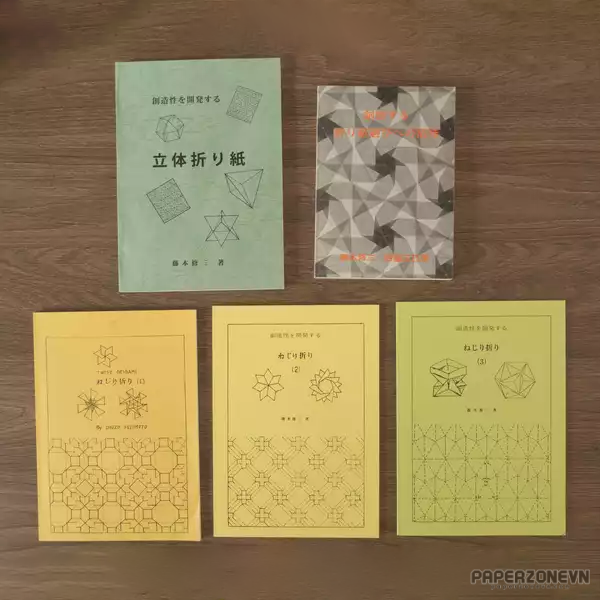- Thumbnail
-

- Resources
- Shuzo Fujimoto & his family
- Author
- Shuzo Fujimoto
- Printed File Format
During an online event dedicated to Shuzo Fujimoto, his children, Hitoshi Fujimoto and Shumi Okada, being his heirs, have agreed to release his five self-published books to the Public Domain. This means that you can now copy, distribute, and use the contents of these books without any restrictions (certain limitations may still apply in some jurisdictions). This is a great gift to the origami community, especially given that physical copies of these books are almost impossible to come by nowadays.


- Solid Origami (立体折り紙), first published in 1976
- Invitation to Creative Playing with Origami (創造する折り紙遊びへの招待), first published in 1982
- Twist Origami I (ねじり折り 1), first published in 1978
- Twist Origami II (ねじり折り 2), first published in 1983
- Twist Origami III (ねじり折り 3), first publication date unknown
Shuzo Fujimoto was a renowned Japanese origami master who is widely regarded as one of the greatest origami artists of all time. He was born in 1921 in Ichinomiya, Aichi Prefecture, Japan, and began folding paper at a young age. Fujimoto was known for his intricate and complex origami designs, which often featured geometric shapes and abstract patterns. He was particularly famous for his work with modular origami, which involves folding multiple sheets of paper into individual modules that are then assembled into a larger, three-dimensional structure.
One of Fujimoto's most famous modular origami designs is the "Cube in a Cube" model, which consists of a cube nested inside another cube. He also created many other intricate modular designs, such as the "Crown" and the "Octahedral Flower." Fujimoto was known for his precise and meticulous folding techniques, and he often used math and geometry to create his designs. He published several books on origami, including "Folding Origami" and "Complete Origami."
Fujimoto passed away in 1997, but his legacy lives on through his origami designs and the many artists he inspired. His work continues to inspire and challenge origami enthusiasts around the world.
One of Fujimoto's most famous modular origami designs is the "Cube in a Cube" model, which consists of a cube nested inside another cube. He also created many other intricate modular designs, such as the "Crown" and the "Octahedral Flower." Fujimoto was known for his precise and meticulous folding techniques, and he often used math and geometry to create his designs. He published several books on origami, including "Folding Origami" and "Complete Origami."
Fujimoto passed away in 1997, but his legacy lives on through his origami designs and the many artists he inspired. His work continues to inspire and challenge origami enthusiasts around the world.
Sponsored: Google Advertising
